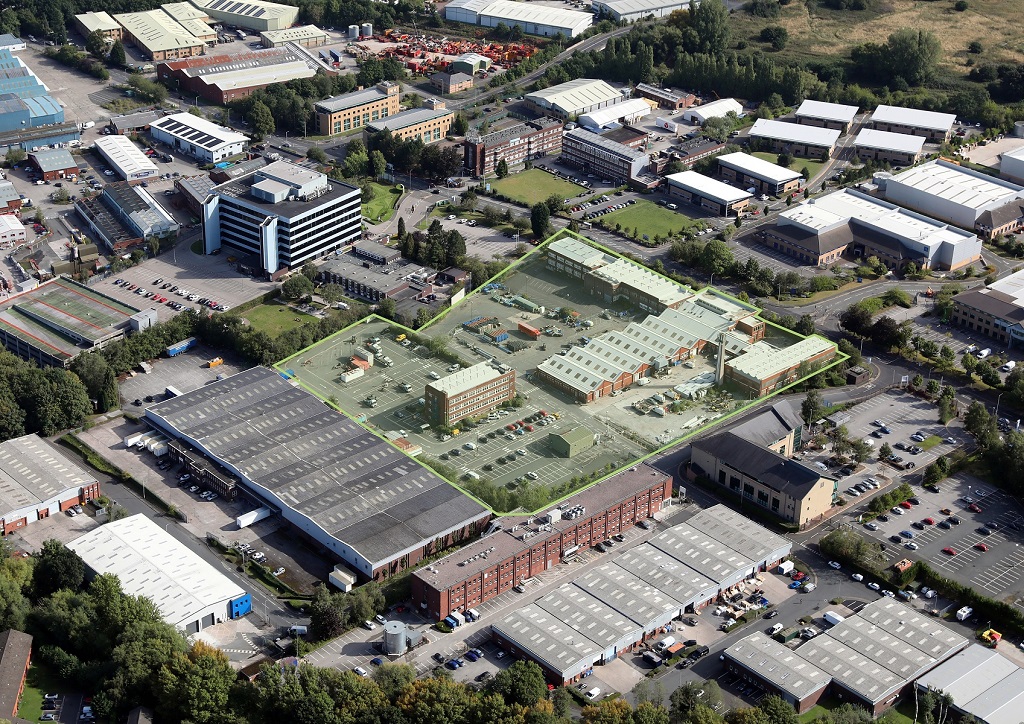The Subplot
The Subplot | Investment zone apathy, single-family rental, sweet spot deals
Good Thursday morning,
THIS WEEK
- Investment zones: Can Trussonomics deliver or will property problems mean it ends in a shrug?
- Elevator pitch: your weekly rundown of who and what is going up, and who is heading the other way

THE PM’S BIG GROWTH GAMBLE
How two property issues can screw this up, or be its saviour
Forget interest rates and sterling for a moment, because planning change and new property investment rules for pension funds and insurers could make or break Trussonomics. Here’s how.
If new Prime Minister Liz Truss and her chancellor Kwasi Kwarteng are to pull off their growth plan gamble they need to make meaningful changes to what they believe are supply-side constraints on the UK economy. The property industry is central to both, and the North West the key testing ground. So what are the chances, and what should the region expect?
Supply side
There are two supply-side constraints in play. One is the eternally discussed subject of relaxing the town planning regime, this time in the context of investment zones. This matters hugely in the North West because the entire region – except Cheshire East – features on the list of 38 authorities in talks to create such zones.
Solvency
The other is Big Bang 2.0 – the fanciful name for the duller subject of changes to insurance solvency rules, which could mean insurance companies and pension funds have billions more to invest in UK infrastructure and development. Subplot trailed Solvency II a few months (and a couple of eternities) ago on 24 March.
A little bit simple
Planning first. The planning regime will be simplified in new investment zones with the aim of getting more built. These investment zones will come in three flavours: one is “tax zones”, one is “development zones”, and one is both. In the “tax zones”, planning relaxation is key to the investment zone plan because while the zones appear to offer some modest but useful tax breaks, none of them will deliver much economic growth unless there are factories, offices and warehouses for people to move into. “Development zones” offer planning relaxation but not the full raft of tax advantages. Presumably “development zones” will be for housing. Some of these tax and development zones will overlap.
Not what it seems
A government paper published on Saturday – you can read it here – went into more detail, but only a little more than we got on Friday. “The need for planning applications will be minimised and where planning applications remain necessary, they will be radically streamlined,” the paper said. Does this amount to much? Maybe not. If you’re looking for rapid growth, the sensible bet is to go for oven-ready schemes, so you would assume they will dominate the selection of zones, and the document suggests as much. Top of the list of potential investment zones are those that have already been identified in existing local growth strategies and transport plans. They will also “already have a masterplan, development order or outline permission”.
Faster, stronger, etc.
The document’s promise of “faster and streamlined” planning is hard to fathom. It talks of removing European Union requirements that “create paperwork and stall development but do not necessarily protect the environment”, without saying what those requirements are. The government will “relax key national and local policy requirements”, which are also not specified. However, “national policy on the Green Belt, [to] protect our heritage, and address flood risk, highway and other public safety matters – along with building regulations – will continue to apply.” That list seems to embrace everything you might relax, except environmental rules, so the space for manoeuvre looks limited. The one specific simplification on offer includes reducing the length of consultation with statutory bodies (ok, but not a revolution).
No affordable housing?
The biggest change on offer is for Section 106 contributions to focus on “essential infrastructure requirements.” The significance of this phrasing is that it doesn’t mention affordable housing. Dropping affordable housing? An interesting idea, but probably not popular given the soaring costs of home occupancy – and probably not a time saver, either.
Eco warriors
It is early days, of course, and maybe the government’s thinking will turn out to be more radical. But we can be sure there will be political trouble. The environment groups – the RSBP and National Trust in the vanguard – are already alert, ears pricked, poised for action. A very odd summer means climate change is now in voters’ minds. Junking environmental and habitat assessments will generate cyclonic political headwinds. If MPs don’t kill the idea, the House of Lords will.
The public speaks
Then there’s you and me to consider. Like every other government in living memory, Boris Johnson’s government had a go at simplifying planning and came badly unstuck because it simply isn’t simple in a democracy to tell people they have to put up or shut up. This isn’t China. Conclusion: planning simplification is probably going nowhere.
Small bang?
Big Bang 2.0 is also mired in problems. To recap: Solvency II is the set of rules that prevent insurers and pension funds from going bust, agreed by the EU in 2016 and ripe for review since the UK left the EU. If the government allows pension funds and insurers to take a more relaxed view of risk, and to keep smaller cash buffers, then it could release billions of pounds for investment. Things like Northern Powerhouse Rail could benefit. A consultation by the Prudential Regulation Authority began in July 2021, and proposals have been expected since this spring. Kwasi Kwarteng met insurers and pension funds to discuss Big Bang 2.0 on Tuesday, although events may have hijacked the discussion.
Or no bang?
This is a very, very bad time to play around with the viability of financial institutions. The last thing anyone wants is a big bang of the wrong kind. The Prudential Regulation Authority already had doubts about the wisdom of relaxing the solvency rules – hence the long silence – while insurers and pension funds have some serious quibbles about detail. This week, the Bank of England began stress-testing institutions on new, alarming, assumptions. The likely outcome is that rather than keeping smaller cash buffers, institutions need to keep a lot more.
Truss and Kwarteng need both planning simplification and a surge in private sector money if “investment zones” are not to end up in the same shrug-dominated limbo as almost every other post-1960s government regeneration initiative. It’s not easy to see how they achieve that.
 ELEVATOR PITCH
ELEVATOR PITCH
Going up, or going down? This week’s movers
Time to invest in single-family rental and sweet-spot office investments in the North West? The doors are sliding open, the lift is already crowded and the hope is we’re going up.
 Single family rental
Single family rental
Yet more evidence emerges this week that the single-family rental (SFR) market is the Next Big Thing (NBT). SFR – basically build-to-rent but houses, not flats, and in suburbs not city centres – appears to be growing fast from a small base. Subplot looked at the reasons earlier this summer (4 August).
Savills says there are currently 15,000 SFR homes in the planning pipeline – more than double the figure from just a year ago. As many as 31 additional SFR schemes have become operational in the last year, providing 2,200 homes. Savills says that with the current momentum and the weight of capital chasing the sector, there could be 30,000 SFR homes in operation by 2027 and more than 70,000 by 2032.
The consultancy forecasts that growth will see SFR take an increasing share of the UK build-to-rent market, growing from 12% to 18% over the next 10 years. That means it will still be small – because BTR is small – but as BTR opportunities narrow and grow more expensive or risky, SFR is sure to win more attention.
 Sale prices
Sale prices
The evidence is mounting that for big ticket items, investor confidence has taken a dent. Landsec – a Manchester and Salford player after its Mayfield and MediaCityUK buys – has just sold Deutsche Bank’s yet-to-be-completed headquarters at 21 Moorfields in the City of London. The price is reported to be £809m, down from a £900m valuation in March, and £1bn late last year. Don’t worry – Landsec still makes a healthy profit, but it’s not the profit it hoped for.
Recent North West deals don’t (yet) show such a sharp fall. In part, that’s because lot sizes tend to be smaller, so there’s more buyers in the frame, and generally less risk to price. But it might also tell us something.
The sale of Manchester’s Sunlight House, agreed last month, now begins to feel like an interesting straw in the wind. Abrdn sold the 210,000 sq ft block to Karrev and its development partner Kinrise for £42m. The asking price was reported as £38m, so well done Abrdn. But in 2019, an earlier sale attempt floundered at an asking price of £54m. So the market is waaaaaay off the top, but nowhere near the bottom. A nice contrast with London.
Perhaps the events of the past week have transformed these deals into historic curiosities? But assuming we’re still in roughly the same world, this is encouraging for the swathes of North West real estate priced in the £30m-£60m sweet spot.
Get in touch with David Thame: david.thame@placenorthwest.co.uk
The Subplot is brought to you in association with Oppidan Life.






The Big Bang only powered London’s economy and it was done with North Sea oil revenue. The rest of us were left with enterprise zones, which were unsuccessful and these Investment Zones, look suspiciously similar.
By Elephant
There are plenty of sites across the NW that could easily be granted Investment zone status. So many oven ready projects or projects being held up by LA obsessions such as Pomona in trafford
By TJL